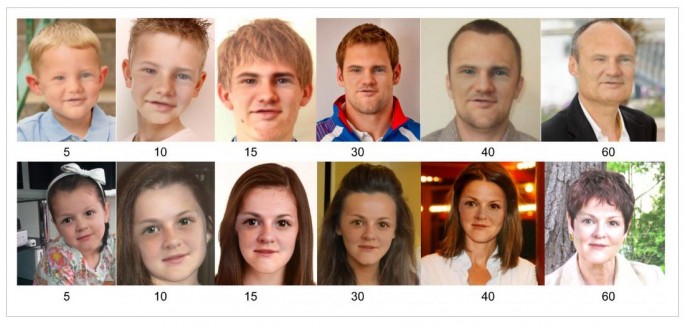New imaging software from the University of Washington has demonstrated the incredible ability to predict what a person will look like from year-to-year as he ages, and what he'll look like if he were a person living in another country or in another century.
All you have to do is tell it what you want and it gives it to you with a lot of help from the internet.
The system called "Dreambit" lets you imagine what you'll look like with a different hairstyle or hair color. You can also see what your appearance if you lived in a different time period; in another country or anything else that can be queried in an image search engine.
After uploading your photo, type in a search term such as "blonde hair," "France" or "1920s." The software's algorithms search Internet photo collections for similar images in that category and seamlessly map the person's face onto the results. The result is a "blended image" of you.
Apart from satisfying your vanity, the new software has more useful uses. It can also help show what a missing child or person evading the law might look like if their appearance has been disguised, or even how they'd look at an advanced age.
Dreambit draws on previous research conducted at the UW and elsewhere in facial processing, recognition, three-dimensional reconstruction and age progression. It combines those algorithms in a unique way to create the blended images.
Developer Ira Kemelmacher-Shlizerman, UW assistant professor of computer science and engineering, and her team previously developed automated age progression software that focused only on a person's face. The new system adds varied hairstyle options and other contextual elements.
These new features enable one to imagine what a child might look five or 10 years into the future under different circumstances. That child might have red hair, curly hair, black hair or even a shaved head.
"It's hard to recognize someone by just looking at a face, because we as humans are so biased towards hairstyles and hair colors," said Kemelmacher-Shlizerman.
"With missing children, people often dye their hair or change the style so age-progressing just their face isn't enough. This is a first step in trying to imagine how a missing person's appearance might change over time."
Another potential application is to envision how a certain actor or actress might appear in a role. For example, the system can marry internet photographs of the actress Cate Blanchett and Bob Dylan to predict how she would appear playing the Dylan role in the movie "I'm Not There."
"This is a way to try on different looks or personas without actually changing your physical appearance," said Kemelmacher-Shlizerman, who co-leads the UW Graphics and Imaging Laboratory (GRAIL). "While imagining what you'd look like with a new hairstyle is mind blowing, it also lets you experiment with creative imaginative scenarios."
The software system analyzes the input photo and searches for a subset of internet photographs that fall into the desired category but also match the original photo's face shape, pose and expression.
Its ability to accurately and automatically synthesize two photographs stems from the combination of algorithms Kemelmacher-Shlizerman assembled, as well as the massive volume of photos available on the internet.
"The key idea is to find a doppelgänger set -- people who look similar enough to you that you can copy certain elements of their appearance," said Kemelmacher-Shlizerman. "And because the system has hundreds of thousands of photos to choose from, the matching results are spellbinding."
Plans are underway to make the system publicly available later this year.



























